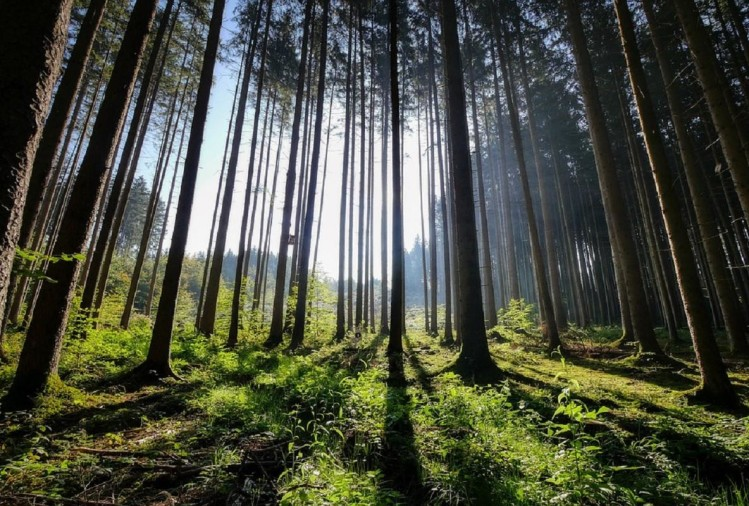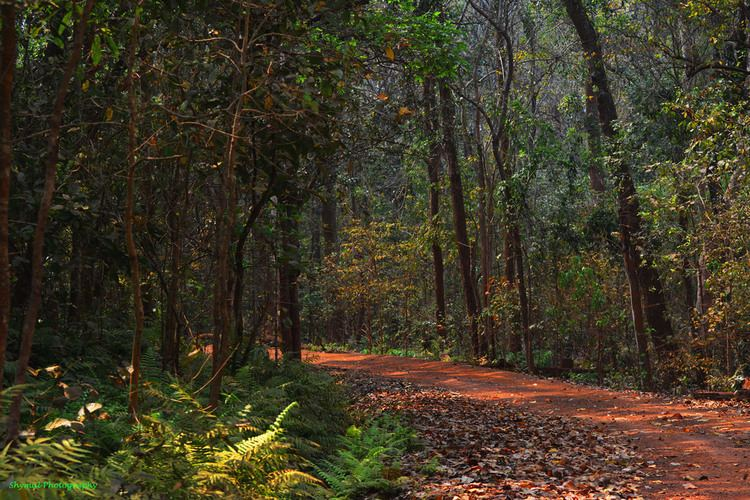
We all have grown up listening to the epic tales of great emperors, demons, love, drama, abductions and war since our childhood. They are deeply engrained in our culture and have been told and retold for thousands of years. These epics are so deeply rooted in our minds that hardly a day passes by where one would not have come across a place that is not typically connected to them. The blend of natural beauty and mythology of Dandakaranya Forest which stood as a very crucial part of Ramayana.
It is a spiritually significant region in India and it lies mostly in the State of Chhattisgarh. Dandakaranya roughly translates from Sanskrit to "The Jungle (Aranya) of Punishment (Sandakan"). Dandakaranya is considered sacred in Hinduism, as many descriptions of the region describe ancient Hindu deities living together in refuge there. According to the Ramayana, it was home to many deadly creatures and demons. Exiled persons resided here and Dandakaranya made the gateway to Vindyas in earlier times. Dandakaranya was the location of the Danda Kingdom, a stronghold of the Rakshasa tribes. It was the state of Lanka under the reign of Ravana. Ravana's governor Khara ruled this province, Rama and his wife Sita and his brother Lakshmana spent fourteen years as exiles travelling around the region. Lord Rama's brother Laxmana in this region, punished Surpanakha for her wicked behaviour. Surpanakha had her brothers Khara and Dushan attack Rama, who killed them in the subsequent battle.
Even in the Mahabharata Book II, Chapter 28 mentions Sahadeva's march towards the south. This prosperous mythological and historical place is very large and It covers about 92,200 square km of land, which includes the Abujhmar Hills in the west and the Eastern Ghats in the east, including regions of Telangana, Andhra Pradesh, Chhattisgarh and Odisha states. It spans about 300 km from north to south and about 500 km from east to west. The Balaghat district of Madhya Pradesh and Bhandara, Gondia and Gadchiroli districts of Maharashtra are part of the ancient region Dandakaranya.

In ancient times, It was successively ruled by the Nalas, Vakatakas, and Chalukyas and now is the home of Gond people (A tribal community). Most of the region is a sanded-over with a gradual downward slope from north to southwest. The Dandakaranya consists of wide, forested plateaus and hills that rise abruptly on the eastern side and gradually decrease in elevation toward the west. It is also blessed with an exceptional scenic beauty that beckons the lovers of nature to explore the forests, waterfalls, wildlife, ancient temples, tribal dances and music. It has a wide variety of tourist attractions which ranges from National Parks, waterfalls and natural caves to palaces, museums and places of religious significance. It has plenty to offer to its visitors with its valuable tribal art and culture. Renowned for its statues of Hollywood characters and Indian cartoons, Dandakaranya Park, is one of the best tourist spots, with an interesting story leading up to its establishment, Dandakaranya Eco Park is often referred as a great place to enjoy. It was built to stop land grabbing and illegal encroachment of the forest areas and today serves as a modern example of sustainable tourism. It is a home of waterfalls. Formed like a horse-shoe, Chitrakoot Falls is the widest waterfall in India. Visitors will also find delight in visiting Kanger Dhara, Chitradhara, Mandawa Waterfall and Tamada Ghumar. Historical caves of this region are the Dandak Cave, Karpan Cave, Kanger Cave, Devgiri Cave and so on. Kumar caves are also impressively expansive in dimension. There are more interesting places to visit. One such place is the Bhainsa Darha Lake, which is inhabited by crocodiles and tortoises.
All in all, Dandakarnya not only offers you a piece of ancient Indian history but serves you a plate to the full whether you are seeking to delve into history, culture, adventure or religion.
The Dandakaranya consists of wide, forested plateaus and hills that rise abruptly on the eastern side and gradually decrease in elevation toward the west. There are also several relatively extensive plains. It is drained by the Mahanadi River and the Godavari River. The economy is based on subsistence agriculture; crops include rice, pulses and oilseeds. Industries consist of rice and dal (pigeon pea) milling, sawmilling, bone-meal manufacturing, bidi (cigarette) making, beekeeping, and furniture making. There are deposits of bauxite, iron ore, and manganese.

Even after so much of tourism potential and natural resources, The Dandakarnya faces financial hardships every day due to its political instability and terror in the province. The tribals in this area have had to suffer violence at the hands of various attackers in the past. Feudal lords, in a lust for power, terrorised the villages with rape and pillage. Being a tribal belt, the post-industrialisation Government also ignored the well-being of the people there. In reaction to this injustice, the ‘Maoists’ emerged as revolutionaries to liberate the people from this aggression.
The Dandakaranya Development Authority was created by the union (central) government in 1958 for integrated development of the area with particular regard to the promotion of the interests of the local tribal population.
Despite all of this, the scenario hasn’t changed. The Government all but consigned this authority to the dustbin and persists with thoughtless decisions for security and development of this area. It is only the Terrorism in locals and Ignorance of Government of that is now ever-present demon in these Forests of Dandakaranya.
